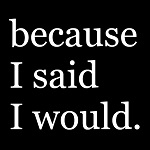About this video
Why is it that the more witnesses there are to an emergency, the less likely people are to help? Learn habits & tactics to combat the bystander effect.
Watch the video and then use these questions to get a deeper understanding of the topic.
- We all like to think that we would do the right thing when we are called to, but we have to practice to make the right choices. Think about the following scenarios. Decide if you would get involved or if you would choose not to get involved. Have a reason for your choice.
- You see some parent leave their child in a car on a summer day.
- You see an older women struggling to get groceries into her car.
- There is loud yelling coming from the upstairs neighbors.
- What are some ways that you can be prepared to help others and overcome the Bystander Effect? Maybe now is the time to learn a new skill that you can use in these situations.
- Explain how human nature plays a part in the Bystander Effect.
Did you enjoy this video?
We are able to make content like this available to you completely free of charge because of generous donors like you. Please give today. A little goes a very long way.
Did you know?
This video is used in our character development programs in schools, juvenile detention centers and prisons. Practical habits and tactics that support character traits can increase graduation rates, decreasing teen suicide and even reduce violent crime. To learn more about the impact of our programs, click here.
Resources
The following resources were used in the making the of this video.
- https://www.scmp.com/news/china/socie…
- Darley, J. M. & Latané, B. (1968). “Bystander intervention in emergencies: Diffusion of responsibility”. Journal of Personality and Social Psychology. 8 (4, Pt.1): 377–383
https://dictionary.apa.org/bystander-… - Hortensius R, de Gelder B. From Empathy to Apathy: The Bystander Effect Revisited. Curr Dir Psychol Sci. 2018;27(4):249–256.
https://www.psychologytoday.com/us/ba…
